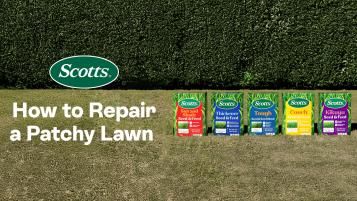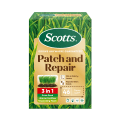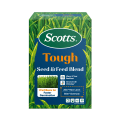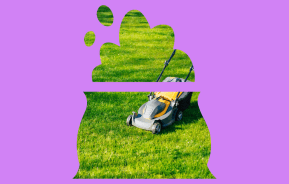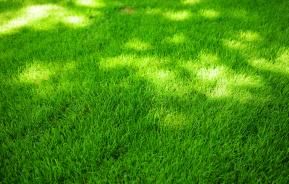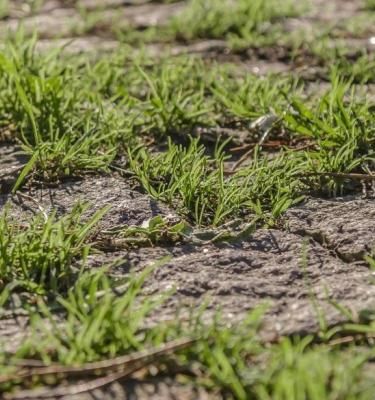
How to Fix Patchy Grass & Thinning Lawns
Brown, patchy, thinning lawn? Don’t stress, we’ve got the fix.
Nothing makes a lawn lover’s heart sink faster than bare patches and thinning turf. But don’t worry, your lawn isn’t beyond saving, it just needs a little TLC.
The good news? Most lawn problems are easy to diagnose and even easier to repair. Below, you’ll find simple steps to bring your lawn back to life. We’ll also walk you through the common culprits behind patchy grass so you can keep your backyard looking lush, green, and weekend ready.
Simple Lawn Fixes for Patchy, Tired Turf
Patchy lawn got you puzzled? Don’t worry, most problems have a simple cause (and an even simpler fix). Here are some common lawn SOS symptoms, what’s really going on, and how to bring back the green.
SYMPTON
Bare patches around paving, decks or the letterbox
- CAUSE: Heavy foot traffic, think kids, pets, posties and paths of foot traffic.
- FIX: Quick fix: patch it with Scotts Patch and Repair. Long term: give your grass a break by adding stepping stones or a simple path.
SYMPTON
Thin, bare edges near garden beds or fence lines
- CAUSE: Too much shade from trees, shrubs or fences blocking the sun.
- FIX: Start by pruning or thinning nearby plants to let more light in. If your lawn still struggles, re-sow with a shade-tolerant variety like Scotts Lawn Builder™ Seed & Feed Sun & Shade Lawn Seed. And if the area is simply too shady, consider turning it into a garden bed, adding mulch, or planting a shade-loving groundcover.
SYMPTON
Bare patches at random locations in the lawn. Often scorched in the centre with bright green grass around the edges
- CAUSE: The likely culprit is dog urine. Think of it as a fertiliser. Puppy pee, especially from females that haven’t been desexed, is super concentrated. That’s why you’ll see a scorched brown spot right where they go, with a ring of extra-green grass around the edges where the concentration is weaker.
- FIX: Drench the spot with water as soon as you see it. For lasting results, try food additives that balance pH or simply patch it up with Scotts 3.6L Patch and Repair.
SYMPTON
Lawn looking thin all over
- CAUSE: Seasonal stress and a bit of lawn neglect (not enough food, water, or care).
- FIX: The best way to bring your lawn back is with a multi-step approach. Aerate the soil to help it breathe. Follow up with a feed of Scotts Lawn Builder™ All Lawn Types Lawn Food or Scotts Lawn Builder™ Lawn Thickener Lawn Seed. For lasting results, stick to a seasonal lawn care routine.
SYMPTON
Bare or very thin patches at random locations in lawn. Remaining grass can easily be pulled away from the soil
- CAUSE: If you've been feeding and watering your lawn and it's getting plenty of sun then you may be the victim of lawn grubs, beetles or worms that like to chew through the root system.
- FIX: Dig up a little soil to find the culprit. Your local lawn expert can confirm what’s causing the trouble. For an easy at-home option, use Scotts Lawn Builder™ Lawn Grub + Insect Slow Release Fertiliser. This not only feeds your lawn but brings it back to life while safely tackling the pests (and leaving earthworms alone).
How to Fix a Patchy Lawn
What you’ll need:
- A trusty spade or garden fork
- Scotts Lawn Builder™ Topdress Mix and Underlay Organic Lawn Soil
- Scotts 3.6L Patch and Repair
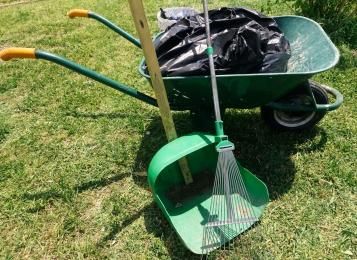
Step 1: Clear the space
Use your spade or fork to lift out any dead grass and unwanted debris. Break up the soil underneath so your new lawn has the best possible start.
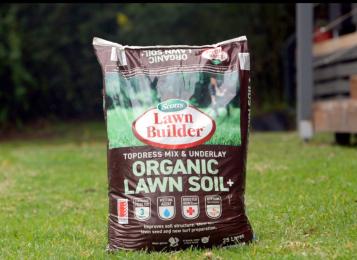
Step 2: Prep the patch
Work in some Scotts Lawn Builder™ Topdress Mix and Underlay Organic Lawn Soil and blend it through the existing soil. Aim to bring the patch up slightly higher than the rest of your lawn, the soil will naturally settle over time.
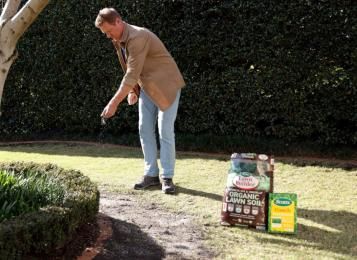
Step 3: Sow and water
Following the instructions on the pack, spread Scotts 3.6L Patch and Repair or your chosen Seed & Feed evenly across the area. Water gently but thoroughly, then keep the patch consistently moist (not soggy) until the grass is well established. Try to keep little feet, kids or pets, off the spot while it’s growing.
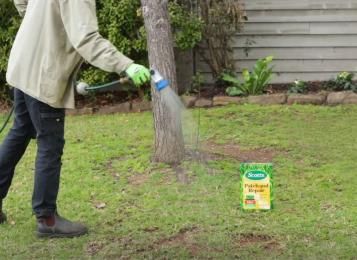
Top Tip
For smaller spots (around 30cm x 30cm), Scotts 3.6L Patch and Repair is your go-to. If you’re dealing with several patches or a bigger bare area, Seed & Feed is the better choice, and you can pick a variety suited to your conditions.
How to Fix a Thin Lawn
What you’ll need:
- Lawn mower
- Steel spring-tined lawn rake
- Scotts Lawn Builder Seed & Feed variety to suit your needs
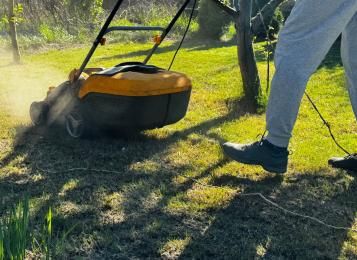
Step 1
Give your lawn its usual trim, then rake it like you mean it. Clear away old grass, leaves and debris. The raking also scuffs up the soil a little, which helps your new seed settle in.
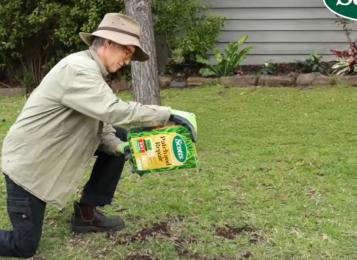
Step 2
Time to sow. Sprinkle seed by hand over the bare or thinning patches (check the label for the right amount). You can try a Scotts® Easy Handheld Fertiliser Spreader, but lawn seed is often so fine it’ll either jam or pour out too fast. Sometimes old-school hand sowing is best.
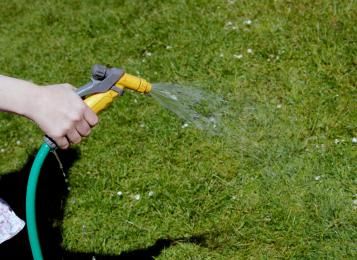
Step 3
Soak it in with a good drink of water and keep the area consistently moist (not soggy) while the new grass gets going. Ask pets and people nicely to steer clear until the fresh green growth is well established.
